Mental Health: Columbine, Sandy Hook, Marjory Stoneman Douglas shootings seemingly rooted in mental illness

Note to our readers: Included in this installment of The Ledger's series on mental illness is the use of language and imagery some may find to be disturbing or graphic in nature.
LAKELAND — Columbine, Sandy Hook, and Marjory Stoneman Douglas.
Now Oxford High School has joined three other schools that have become synonymous with mass school shootings that left dozens dead and the public searching for answers.
Columbine High School — April 20, 1999
At about 11:15 a.m. On April 20, 1999, Columbine High School seniors Eric Harris, 18, and Dylan Klebold, 17, walked onto campus and began shooting their classmates. In an hour, they killed 12 students, one teacher trying to guide students to safety, and wounded 24 students. Then they turned the guns on themselves.
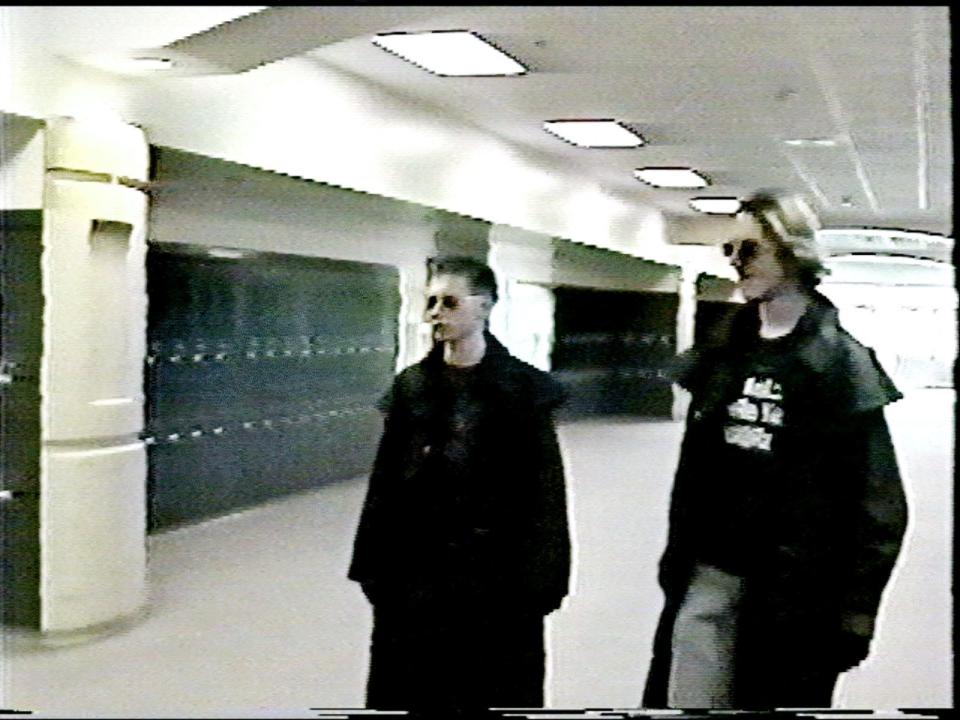
The events were laid out in the May 2001 “Report of Governor Bill Owens’ Columbine Review Commission.”
Harris was involved with law enforcement a year and a half before the mass killing at Columbine. He had been harassing a friend with whom he used to ride to school. The threatened boy’s father had printed out pages from Harris’ website on America Online, “that should have alerted the police to the homicidal and suicidal intentions of the two young men. The contents of the website included a discussion of the pipe bombs Harris and Klebold planned to use in their attack...the website was replete with clear warnings about what the two authors intended.”
“I’m coming for everyone soon and I WILL be armed to the f---ing teeth and I WILL shoot to kill,” Harris wrote in 1998. “God I can’t wait til I can kill you people. Feel no remorse, no sense of shame, I don’t care if I live or die in the shoot-out. All I want to do is kill and injure as many of you ... as I can...”
He included among those he wanted to kill Brooks Brown, the boy he had been harassing. On campus in 1999, minutes before the rampage began, Harris let Brown go.
"Brooks, I like you now. Get out of here. Go home," Harris told him in the school parking lot.
Days after Brown’s father called the sheriff’s department in 1998, Harris and Klebold were arrested for breaking into a van and stealing electronics. Both were put on probation and told their probation officer they had learned their lesson. They were given early release, but Harris remained bitter about it.
However, the harassment and van burglary were not connected by the Jefferson County Sheriff’s Department.
Harris’ misbehavior reached the point that his own father, an Air Force officer, began documenting each incident.
In November 1998, Harris wrote in his journal a detailed account of the violent rape of a "weak little freshman” girl he was hoping to carry out, including his desire to eat human flesh. The writing was found after his death.
Klebold had written a report for English class about a lone gunman going on a killing spree that was so disturbing, his teacher called his parents. When they spoke to him about it, he said it was “just a story.” He had also written about Charles Manson and his followers’ killing spree in Sharon Tate’s home in 1969.
To his parents and some friends, Klebold was seen as nice. Three weeks before the shooting, he had gone with his parents to pick out his dorm room at the University of Arizona, where he had planned to major in computer science. Three days before the killing, he had gone to prom with a dozen other friends and a girl, who had said she had convinced him to go. She is the same girl who bought some of the weapons used during the rampage.
The boys were known to shout “Heil Hitler!” during bowling class if they bowled a strike. On video tapes, they discussed “natural selection” — the dying of the sick and the weak from a species. Harris was wearing a shirt that said “Natural Selection” during the rampage.
They spent the year before the mass killing making bombs and blowing them up, participating in target practice and even booby trapping a hole in the fence behind the pizza parlor where they both worked, thwarting other teens trying to take a shortcut. Their small circle of friends knew about and even attended some of these events.
The governor’s report stated the pair had made 99 bombs, storing them in their homes until they took them to school on April 20, exploding some during their rampage.
According to the governor’s report and the website “A Columbine Site,” Harris was taking the antidepressant drug Luvox, in connection with anger management therapy he was undergoing. The governor’s report said it was prescribed for obsessive-compulsive disorder.
“It's been theorized that Luvox's side-effects contributed to what happened – and indeed most anti-depressants are now cautioning that their use in teens can increase violent and/or suicidal thoughts,” the Columbine website states.
Harris and Klebold planned their attack for about a year. Some say it could have been triggered by an event in the cafeteria, although it was not clear from the governor’s report when this event took place.
“It was reported (although school authorities disputed the point) that Harris and Klebold had been the victims of a particularly humiliating incident in which they were surrounded in the cafeteria by other students who squirted them with ketchup, laughed at them, and called them 'faggots,' and that teachers were present at the time but did nothing to intervene,” the governor’s report states in a footnote.
Some parents and students told the governor’s commission that bullying was rampant at the school and the administration did little to nothing to stop it. Administrators and teachers, however, said that wasn’t true.
Harris and Klebold committed suicide in the school's library after their killing spree.
Sandy Hook Elementary School: Dec. 14, 2012
On Dec. 14, 2012, Adam Lanza, 20, shot to death his mother in the home they shared and then drove to Sandy Hook Elementary School, where he had attended as a child, and killed 20 6- and 7-year-old students, along with six adults.
According to The Report of the Office of The Child Advocate’s study on the Sandy Hook shooting, multiple ingredients of mental health and personal issues combined to create Lanza’s horrific shooting spree that day, including:
Autism, an obsession with guns, violent video games and mass murders.
Social isolation in the years leading up to the shooting.
Self-imposed isolation from his father.
His mother’s insistence that the world accommodate him, rather than him adjusting to the world.
Anorexia.
His lack of treatment or medication.
His mother's decision to move away from Sandy Hook and the only home he had ever known.
The authors of the report were cautious, though.
“This report does not seek to draw any link between mental illness and violence, or between persons with autism and violence,” the report states. “There are millions of individuals with mental illness or developmental challenges in this country and worldwide, and a very small percentage of these individuals will engage in any act of violence, much less violence on a horrific scale.”
But they added that his “severe and deteriorating internalized mental health problems were combined with an atypical preoccupation with violence. Combined with access to deadly weapons, this proved a recipe for mass murder ... In the end, only he, and he alone, bears responsibility for this monstrous act.”
Lanza was described as “an extremely active child who did not sleep well … he never slept through the night ... avoided touching, and had early communication problems. He was said to have ‘made up his own language … he did not like to be held, kissed or hugged.’”
When Lanza was 9, his parents separated. He later told a child psychiatrist that “they must have ‘irritated’ each other as much as they irritated him.” Despite the separation and divorce, his father saw Lanza as much as he did when the couple was married.
In his early years at Sandy Hook Elementary School, Lanza was described as a good student who interacted well with his peers, who liked him. But, teachers noted, he never started a conversation.
It was while he was in the fifth grade at Sandy Hook that he and a classmate produced a creative writing project called “The Big Book of Granny.”
“This was a very dramatic text, filled with images and narrative relating to child murder, cannibalism and taxidermy,” the report states. “Authors conclude that it was not the sort of creation that most children would even know to invent. The book was spiral bound with a purple cover, indicating that an adult may have helped him ‘professionalize’ this work.”
As an adult, the report states, Lanza's co-author has been diagnosed with a mental illness and was purported to be living in a residential treatment setting.
During his fifth-grade year, Lanza was also described as “seemingly happy, smiling, and participating in community and school events.” But the report states that “The Big Book of Granny” showed that Lanza was “deeply troubled by feelings of rage, hate, and (at least unconscious) murderous impulses.”
He had also began obsessively washing his hands, avoiding eye contact with people, and becoming increasingly fearful.
As he got older, he became more anxious and frustrated, suffering from panic attacks. He didn’t like to be photographed, had trouble concentrating, “seemed easily overloaded.”
Unlike the Columbine shooters, and despite his odd behavior and appearance, teachers and classmates reported that Lanza was not bullied in school.
At the age of 12, because of his increasing “social, emotional and communicative struggles,” his mother withdrew him from Newtown Middle School and enrolled him in a private Catholic school. Afterward, he became obsessed with religion. He later told a psychiatrist with the Yale Child Study Center that he “disapproves of religion because it is ‘illogical.'”
One teacher there described him as anti-social, never wanting to participate in activities, never responding to classmates' acts of kindness toward him, and writing obsessively about battles, destruction and war.
“Adam Lanza’s level of violence was disturbing,” the teacher said. “I remember showing the writing to the principal at the time, Adam Lanza’s creative writing was so graphic that it could not be shared.”
He left at the end of the seventh grade and did not return to school – public or private – for his eighth grade year. That was the year his mother took him to the emergency room for repetitive behaviors that had grown worse. She told doctors that he had “borderline Autism in the past, but had outgrown it.”
At the hospital, he was diagnosed with Asperger’s Syndrome, a type of Autism, and Obsessive-Compulsive Disorder. Doctors wanted to keep him for a full medical workup and an additional evaluation by psychiatry staff. She declined, saying he had an appointment to see a community psychiatrist in three weeks.
That community psychiatrist told investigators that Nancy Lanza was not interested in having her son take medication that would “ameliorate any of his symptoms."
The community psychiatrist recommended home-schooling for Lanza.
“He lacks empathy and tends to employ a very rigid systematic thought process,” the community psychiatrist wrote. “He demonstrates intense emotional rage when his systematic world is threatened due to his extreme need for routine.”
Several experts stated at the time that the community psychiatrist’s conclusion that Lanza should be homeschooled was “completely inappropriate and non-therapeutic for Lanza.”
The community psychiatrist informed the school district in 2006 that Lanza “could not and was not receiving home-bound or hospital-based tutoring and he was not attending school at all.”
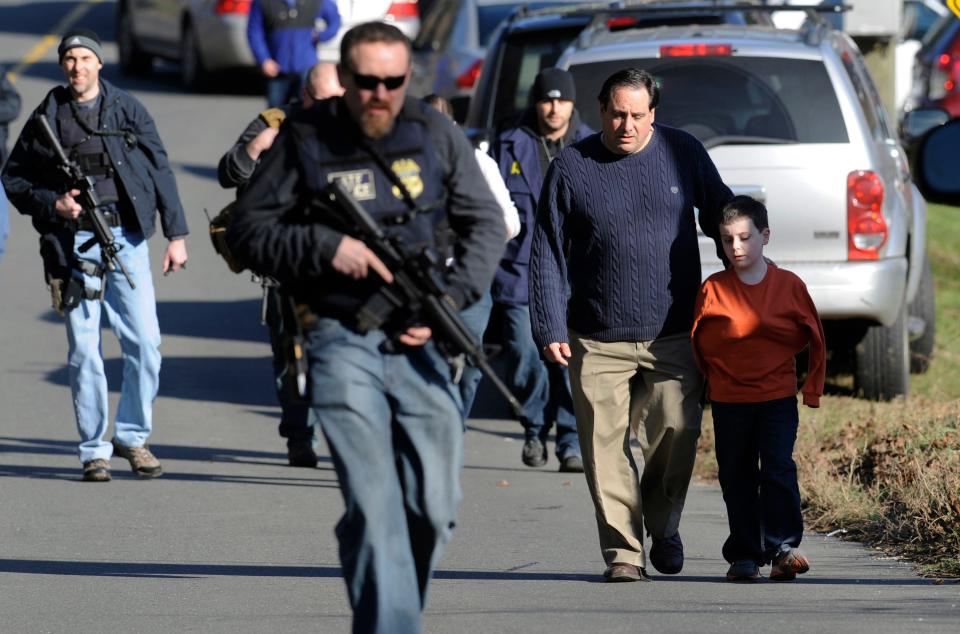
He was placed in school again and withdrawn a number of times.
At 13, he was 5-foot-8 and weighed 98 pounds.
At his father’s insistence, Lanza was seen by a psychiatrist at the Yale Child Study Center, who concluded that Lanza’s socialization disabilities were in urgent need of addressing so he could return to school and be around his peers.
“We believe there is a significant risk to Adam Lanza in creating, even with the best of intentions, a prosthetic environment which spares him having to encounter other students or to work to overcome his social difficulties,” the Yale psychiatrist wrote. "Having the emphasis on adapting the world to Adam Lanza, rather than helping him adapt to the world, is a recipe for him to be a homebound recluse, unable to attend college or work productively into his twenties and thirties and beyond with mother becoming increasingly isolated and burdened.”
According to emails written by Nancy Lanza, her son felt like he was “being tortured” during the Yale interview process and “she didn’t think he would be willing to talk to another doctor for a long time.”
A psychiatric nurse who met with him half a dozen times prescribed him an anti-depressant/anti-anxiety medication. She and his father insisted he take it, explained to him why, and she even recommended books he could read about it.
Nancy Lanza was listed as “non-compliant” when it came to her son taking medication. He took it for three days and she told the nurse he developed a variety of symptoms, including decreased appetite, nausea, dizziness, disorientation, disjointed speech, sweating, an inability to raise his arm and that he was “practically vegetative.”
“Mrs. Lanza said Adam Lanza would be discontinuing the medication,” the report states, adding that Nancy Lanza said the community psychiatrist agreed.
In the meantime, Lanza’s father was trying to coordinate care and an education plan with the Yale Child Study Center, the community psychiatrist and the school district. They prepared Lanza to attend Newtown High School as a 10th grader.
Despite his diagnoses, it was not properly indicated on his school records, which would have gotten him the help he needed from the school.
Instead, his mother emailed teachers, asking them not to engage in any lessons about children who are different and not to tell him he was being treated differently because it would trigger insomnia and loss of appetite.
She wrote that her son “did not want to be identified as a special education student and that he did not want special accommodations … Since he obviously NEEDS preferential treatment, it leaves me scurrying around behind his back fixing things ... this is a high-stress 24/7 operation of misinformation.”
By February, he had dropped most of his regular classes. Despite that, he used independent study to take classes at to Western Connecticut State University and to graduate a year early from high school. He had a 3.89 GPA.
But he also had emotional meltdowns when asked to do something he didn’t want to do, including seeing a math tutor.
At this point, he was 5-foot-10 and weighed 112 pounds.
In 2009, he graduated from high school and completely withdrew from virtually all structured social activities, “marked by hours in his room, extensive cyber-activities, and a marked decrease in communication with family members.” The report said Lanza seemed to spend an increasing amount of time in escapist activities in which he did not have to interact with people.
The next year, he stopped communicating altogether with his father, despite Peter Lanza’s continued emails to his son, asking to see him and asking to do things with him.
In the months leading up to the shooting, Adam Lanza hardly came out of his room at all. He became obsessed with the video game Dance Revolution, playing it for hours at a time in his room or, sometimes, at a local arcade.
“He danced to a state of physical exhaustion,” the report states. “The manager of the (arcade) had to eventually unplug the game to get Adam Lanza to leave, as if Lanza could become so lost in the activity that he would not respond to communication.”
Inside his room, he played World of Warcraft, various iterations of Call of Duty, Dead or Alive 3, among various “first-person shooter games.”
In June 2012, he wrote a cyber acquaintance that his “interest in mass murdered (sic) has been perfunctory for a long time. My enthusiasm I had back when Virginia Tech happened feels like it’s been gone for a hundred billion years. I don’t care about anything. I’m just done with it all.”
The Federal Bureau of Investigation reviewed his computer and said his obsession with mass killing was “unprecedented.” The report stated that Lanza “increasingly lived in an alternate universe in which ruminations about mass shootings were his central preoccupation.”
Nancy Lanza, in an effort to connect with her son, bought weapons for them, including the .223-caliber Bushmaster XM15-E2S rifle, a 10mm Glock 20SF handgun, and a 9mm SIG Sauer P226 handgun that were all found with him at the scene.
"The authors recognize the significant role that assault weapons and high capacity ammunition clips play in mass murder," the report states. "That Adam Lanza had ready access to them cannot be ignored as a critical factor in this tragedy. Assault weapons are the single most common denominator in mass shootings in the United States and, as such, their ready availability must be considered a critical public health issue."
At some point in the weeks or months before the shooting, Nancy Lanza told her son that she wanted to move to Washington state, where she wanted to enroll him in a special school, or North Carolina. He told her he would go to Washington.
For three months, Lanza did not come out of his room, with his mother leaving what he told her via email that he needed outside his door. But she never consulted a doctor about his issues.
He was also not eating. By December 2012, he was six feet tall and weighed 112 pounds. The report stated that he was anorexic to the point of being malnourished, which can cause brain damage. That combined with autism and OCD compounded his risk for suicide, according to the report.
And that’s when he took the lives of 20 children and six educators before killing himself.
The report states that he might have chosen the school “because he could overpower people, a dynamic that is very important for mass shooters as they do not want to be thwarted.”
![Florida school shooting suspect Nikolas Cruz enters the courtroom for issues dealing with procedural motions at the Broward Courthouse in Fort Lauderdale, Fla., Tuesday. Cruz faces the death penalty if convicted of the massacre. [Amy Beth Bennett/South Florida Sun-Sentinel via AP, Pool]](https://s.yimg.com/ny/api/res/1.2/ECEJnFxLnPzV7v3WHNI0Vw--/YXBwaWQ9aGlnaGxhbmRlcjt3PTk2MDtoPTY3NA--/https://media.zenfs.com/en/the-ledger/e2f63a89e06eb738f8db754b71b5a61a)
Marjory Stoneman Douglas High School: Feb. 14, 2018
On Feb. 14, 2018, Nikolas Cruz, 19, walked into his former high school, Marjory Stoneman Douglas High School, unimpeded, and shot to death 14 students and three educators.
By all accounts, Cruz was an angry, troubled boy. He had also been diagnosed as developmentally delayed and, according to reports, possibly autistic.
According to the Marjory Stoneman Douglas High School Public Safety Commission report on the shooting, Cruz had exhibited violent behavior as early as 3 years old. By the time of the shooting, there were 69 documented incidents in which Cruz threatened someone. The Brevard Sheriff’s Office had 43 contacts with the Cruz family prior to February 2018 – of those 21 were for Nikolas alone. The calls included:
Nine calls for children fighting or running away.
One for Nikolas acting out toward his mother.
Two complaints about Instagram posts involving guns.
Two calls involving family friends warning about Cruz.
One follow-up call.
One threat assessment.
One complaint of Cruz shooting chickens.
One field interview report.
There had also been 55 discipline referrals at Broward County schools involving Cruz.
Cruz and his biological brother had been adopted by the Cruzes. But his adoptive father died when Nikolas was 6 years old and his adoptive mother, Lynda, struggled to maintain control over the two boys. Several calls to the sheriff’s office were Lynda Cruz “advising that her teenage children were out of control destroying the home and fighting” and “fighting and not listening to her” and that Nikolas Cruz “had hit her with a plastic hose from the vacuum cleaner.”
At one point, “Cruz threw objects in the home. He was angry because he lost the privilege to play video games.”
Henderson Behavioral Health responded several times, although the report does not say whether Cruz was ever Baker Acted by Henderson officials. He did, however, receive extensive treatment from Henderson's counselors.
One woman called the sheriff’s office after Cruz shot her chickens with an airsoft gun – one of them died. She declined to press charges after learning that he is developmentally delayed.
In February 2016, Cruz posted a photo of himself on Instagram with a gun and wrote something along the lines of “I am going to get this gun when I am 18 and shoot up the school.”
A deputy investigating the post said “no threats noted” and sent the information to Marjory Stoneman Douglas Resource Officer Scot Peterson. He is the same school resource officer who took cover and did nothing as Cruz later shot to death 14 students and three educators.
The school conducted a threat assessment on Cruz seven months later, and Cruz was prohibited from carrying a backpack on campus. They also conducted a Baker Act, but he did not meet the criteria to be involuntarily held for evaluation.
In November 2017, Lynda Cruz died and a friend of the family called the sheriff’s office to inform them that Cruz had guns and she was concerned about him because “three months earlier Nikolas Cruz had knocked out three of (Lynda Cruz’s) teeth.”
Another friend of Lynda Cruz called BSO to report that Cruz “wanted to join the military to kill people.” The friend said Cruz “might be a Columbine in the making and was a threat to kill himself.” She also called the FBI to report this, as well. The FBI closed out the report as “having no lead value.”
The report states that Cruz received “extensive mental health treatment and school-based treatment from multiple providers. Over a nine-year period, Cruz regularly received hundreds of hours of therapy sessions from Henderson Behavioral Health.”
Cruz also displayed extreme anti-Semitic rhetoric, including saying “I wish all the Jews were dead.” In reference to the mass shooting of the Orlando nightclub Pulse, he commented, “I’m glad they killed all those gay people.”
He was interested in Nazis, Hitler and the Ku Klux Klan and would draw swastikas on his personal belongings.
“Numerous people – mostly fellow students – knew of Cruz to have a history of killing small animals such as squirrels, toads, and lizards,” the report states. “A former classmate spoke of Cruz bringing a dead animal to school in a lunch box and showing it to her and other students. Another former MSD student spoke of Cruz killing a duck with a tire iron.”
Cruz also told fellow students that he “liked seeing people in pain.” This same student reported Cruz to the assistant principal as a school shooter threat. The report states that the assistant principal didn’t seem concerned, telling him to google autism.
Some students saw him with weapons, both on and off campus, and another saw him searching on a computer about how to make a nail bomb.
The mother of a co-worker and a fellow classmate both reported to authorities after the killing that Cruz had told them “he could shoot up the school.”
Cruz posted multiple warnings on social media about his intentions. While the dates are unknown, Cruz wrote, “I wanna f---ing kill people” … “random people man f--- people I’ll kill them all” … “I wanna die Fighting killing s--- ton of people” … “I am going to kill law enforcement one day they go after the good people.”
On Dec. 9, 2017 – two months before the shooting – Cruz purchased a Maverick Arms 12-gauge shotgun from Dick’s Sporting Goods in Boynton Beach.
Cruz used his phone to search the internet for things like “shooting people massacre” and “rape caught on video.”
He also posted “I want to kill people but I don’t know how I can do it. Walk to a park, get someone to pick me up I just don’t know anymore but it will happen soon.”
He also searched Marjory Stoneman Douglas High School’s webpage for the class schedule.
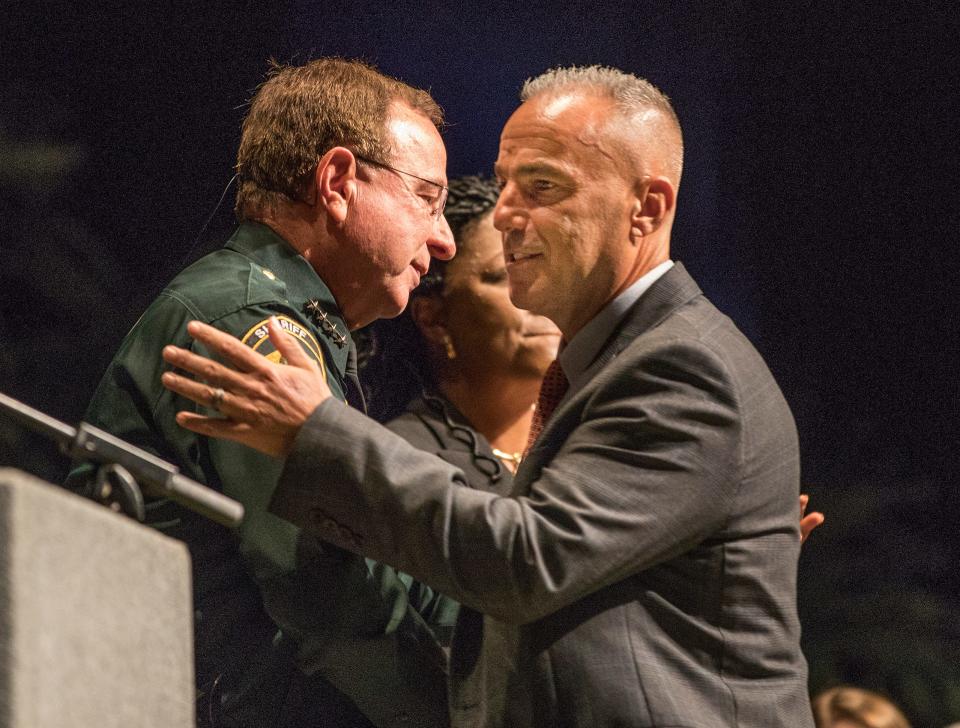
Cruz at one point had a girlfriend – a co-worker at the Dollar Tree. In the notes section of the phone, he wrote her a love letter, including “if I don’t die please see me it will bring happiness to me I want to love, I want to be in love with you, forever with no end in sight (emoji) even if I’m raped to death you will always be on my mind that’s how much my love is for you...”
In the days leading up to the shooting, he posted a video describing his plan, which he would eventually carry out. He also searched for a therapist who could treat his homicidal thoughts.
And then he posted a video of an iguana he had killed, it’s organs lying on the ground next to it.
On Feb. 11, he made two videos talking about how everyone would know his name and what he was going to do.
“My goal is at least 20 people...You’re all going to die,” he said.
He listened to the song “Pumped Up Kicks” about a school shooting multiple times in the days before the attack.
On the afternoon of the attack, Cruz called a ride-share service to take him to the school. While in the car, he texted a friend and his ex-girlfriend multiple times.
He told the girl, “Eat well, sleep well, and behave well my love." When she reminded him that she had a new boyfriend, he responded, “Doesn’t matter anymore...I love you.”
One of the last texts he sent before getting out of the car to kill his classmates and school officials was to her.
“Your (sic) the love of my life...you’re the greatest person I have ever met.”
Cruz has pleaded guilty to all charges and is awaiting sentencing.
Oxford High School: Nov. 30, 2021
The most recent mass shooting at a school was Nov. 30, allegedly conducted by Ethan Crumbley, 15, after his parents bought him a 9-mm Sig Sauer semiautomatic pistol four days before.
According to the Detroit Free Press, that day, one of Ethan’s teachers at Oxford High School saw a note he allegedly wrote and drew and found it so alarming that she took a photo of it with her cellphone.
The note contains a drawing of a semi-automatic handgun, pointing at the words, "The thoughts won't stop. Help me."
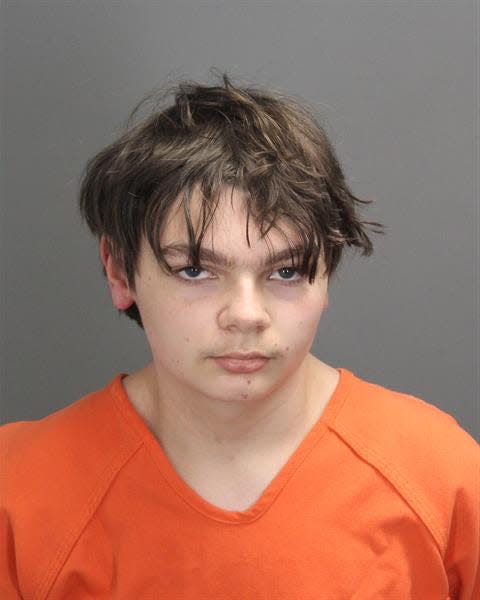
In another section of the note, there was a drawing of a bullet. Above the drawing, the words, "blood everywhere."
Between the drawing of the gun and the bullet is another drawing of a person who appears to have been shot twice and is bleeding. Below that figure is a drawing of a laughing emoji.
He also wrote in the note "my life is useless" and "The world is dead."
The teacher shared the photo with administrators and Ethan's parents, James and Jennifer Crumbley, were called to the school. A school counselor escorted Ethan from his classroom to the office with his backpack. A counselor obtained the drawing, but Ethan had apparently changed it, scribbling out the gun and the bloody figure, as well as the phrases "help me," "my life is useless," "the world is dead" and "blood everywhere."
School officials showed his parents the drawing and told them that they were required to get their son into counseling within 48 hours. But James and Jennifer Crumbley did not take their son home – or to a mental health facility — that morning. They also did not ask their son whether he took his new gun to school or look in his backpack for the gun or any weapon. Investigators say he had it with him in that meeting.
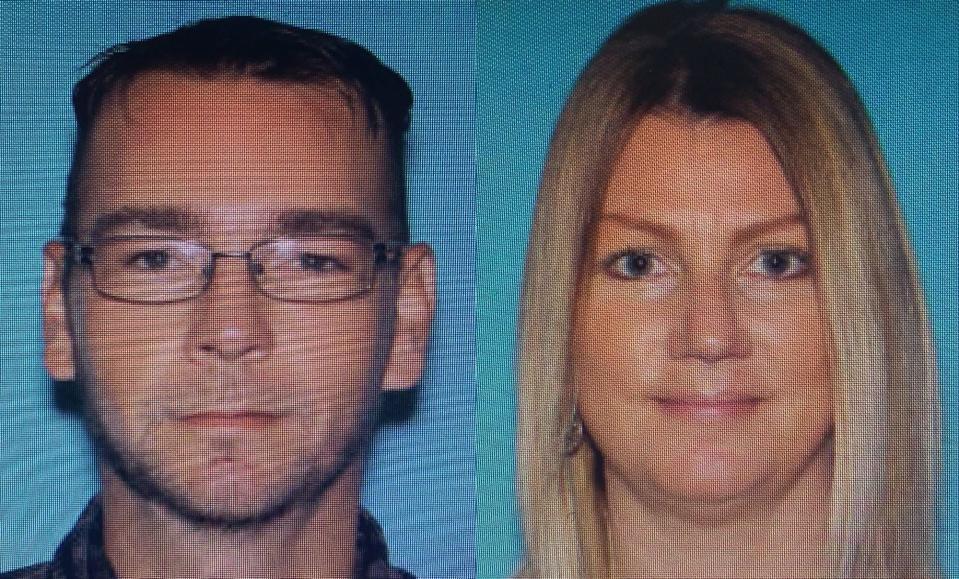
James and Jennifer Crumbley left the high school without Ethan, and administrators allowed him to return to the classroom.
About 1 p.m., the shooting at Oxford High School began, according to law enforcement accounts.
At 1:22, when Jennifer Crumbley heard of an active shooter at Oxford High School, investigators say she texted her son: "Ethan, don't do it."
They are all in jail. Ethan Crumbley faces four counts of murder, while his parents are now charged with four counts of involuntary manslaughter.
Ledger reporter Kimberly C. Moore can be reached at kmoore@theledger.com or 863-802-7514. Follow her on Twitter at @KMooreTheLedger.
This article originally appeared on The Ledger: Mental Health: Columbine, Sandy Hook, Marjory Stoneman Douglas rooted in mental illness

